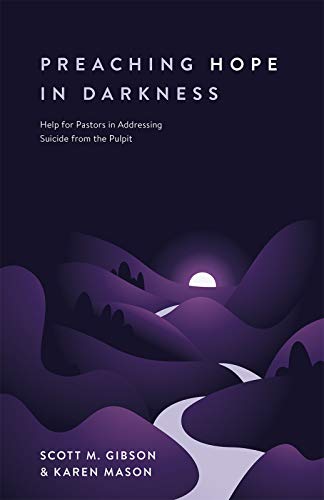Preaching Hope in Darkness: Help for Pastors in Addressing Suicide from the Pulpit by Scott M. Gibson and Karen E. Mason is excellent for addressing one of the most vital and yet ignored topics from the pulpit.
For every fourteen suicide deaths each year, approximately five hundred people attempt suicide, and three thousand people think about suicide. About 8 million Americans have suicidal thoughts each year.
Page 9
The first time I preached a funeral for a victim of suicide, it was overwhelming, numbing, and I felt ill-prepared to care for the survivors afterward. That also describes every other time I have preached a funeral following a suicide. It’s easy to complain about the things we didn’t learn in Seminary. However, we are blessed with resources from experienced pastors and caregivers that continue to sharpen our service and give us the help we need to minister in the most challenging circumstances.
To Preach and To Protect
The purpose of this book is to point out the Mother Lode (what preaching the hope of the gospel has to do with suicide prevention) and show how to mine it (how to preach to protect against suicide).
Page 2
Admittedly, the goal for Preaching Hope in Darkness, as stated in the quote above, seems lofty and prone to disappointment. To preach against suicide is one thing, but to protect requires much more than pulpit presence. The authors realize this and have given us much more than a book on preaching; there are resources here for teaching, caring for youths, families, and the whole community. The book takes a holistic approach to suicide care in the church.
Case Studies of Hope in Darkness
Suicide is not the core of the deceased’s identity.
Page 17
The authors have mined this book from the wealth of their experience. Gibson is a preacher and homiletician. Mason is a suicide preventionist. Each chapter begins with an actual case study of ministry to a person contemplating suicide or ministry to survivors. A series of discussion questions follow each case study. Reading the book on my own, I found myself contemplating the questions and wishing to read the book with friends or co-workers. This is an excellent read for a ministry group or leadership team.
Practical Hope
Develop a hope kit with Samuel. A hope kit contains Samuel’s reasons to live, which he’ll turn to when the suicidal thoughts get strong. Include verses that remind him of God’s loving presence. Put in pictures of all the people Samuel is connected to, including a picture of the church family, who would be devastated if he killed himself . . . Hope kit apps can be downloaded to his phone.
Page 43
What struck me was just how practical this book is. It is filled with solid, tangible expressions of hope and care that can be adopted and adapted as needed in a church. I came away from the book thinking, “Everything here seems doable. We can reach hurting people before they harm themselves.”
Addressing That One Person
In their sermons, clergy are not “doing therapy from the pulpit.” But they are aware of who might be in their congregation—they assume they have a suicidal person in their congregation each week. They think, “How would I intentionally address that one person?”
Page 20
The authors recommend regular (annual) preaching on suicide, specifically preaching about what to do before the next suicide. While that might sound dark, it is a topic that needs addressing with much grace and hope.
I found one of the greatest encouragements in the book to be Chapter 3’s Seven Fences of Prevention. Like with physical fences, the purpose of these preaching points is to make suicide less accessible in the minds of our hearers. The beauty of the seven is that they don’t simply address suicide but the life of the community of believers. Fence number one is to “preach and teach on connection to others.” Fence 3 is to “preach and teach on hope.” You will likely find that your preaching is already building these fences, and with a bit of intentionality, you’ll build them even more substantial.
Don’t Forget the Appendices
The appendix may be a useless organ in the human body, but it is vital to Preaching Hope in Darkness. The appendices (nine of them) make up more than half of the book. They are filled with resources and ideas that will enable you to address suicide and minister to your community in a wide variety of ways.
You will find sermons dealing with suicide, a thoughtful sample handout for survivors following a suicide, sample funeral sermons, and a series of Bible studies for youth and young adults that blew me away. Each of these resources is another example of why this book would be best read in concert with others. There’s too much here for a lone preacher to do on his or her own.
Don’t Do It on Your Own
Protestant clergy have some of the highest work-related stress and the lowest personal resources . . . clergy are vulnerable to depression and anxiety. Sabbath rest is a crucial part of engaging suicide.
Page 14
We’ve seen the rising tragedy of clergy suicide in recent years. The authors seem very aware that they are not just writing to servants but sufferers. I was impressed with how many times they include the complete reference to the National Suicide Prevention Lifeline (1 800 273 TALK). It occurs on page after page, multiple times in some chapters. This book is not just about how you can encourage your congregants in dark times; it’s about encouraging you as well.
I Am a Survivor
I have previously written and preached about my family’s suicide story. This book connected with me personally. I found it helpful as I continue to heal. Regardless of your experience, this is a resource that will guide you and your congregation through difficult times—hopefully even before you realize you need it.
